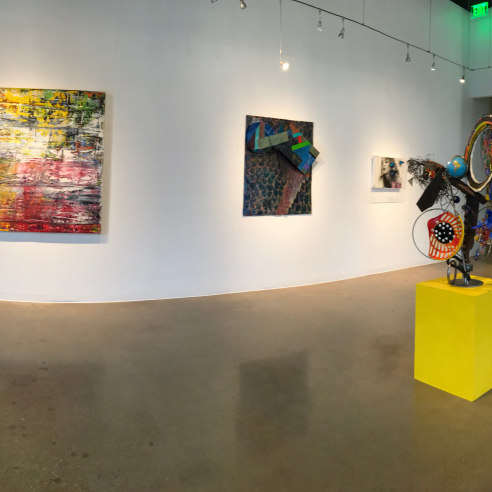
“Robert Graham has unrelentingly pursued close observation and ‘ways of seeing’ for over forty years. The nude female model has been both object and participant in the manifestation of this gaze. Through drawings, photographs, videos, and, especially, sculptures, Graham has portrayed and interpreted the female figure since the beginning of his career. What makes Graham unique – in fact, radical – within contemporary art is his uncompromising persistence in this subject and line of inquiry, continuing a long art historical trajectory while constantly finding new tools of both conceptual and technological expression.”
“Graham’s sculptural work began with small wax figures encased in Plexiglas environments suggestive of 1960s California beach culture. At the time, unschooled in figure drawing or human anatomy, Graham works from photographs and pop imagery culled from magazines and mass media. These voyeuristic habitats, with their implied situational narratives seemingly appropriated from soft porn advertising, were readily embraced by an art world hip to the stylized, erotic nudes of Tom Wesselman and Mel Ramos. However, Graham’s interest in the nude quickly progressed to a probing exploration in which the role of scale, movement, verisimilitude, and relation to the viewer became significant concerns. Using a self-constructed pinhole camera, the artist scaled himself to the space of the diminutive figure. He experimented with different modes of viewing, observing physicality, movement, and mood through the camera lens, the video recorded, and directly in quick drawn sketches and clay models. He fragmented and multiplied the figure – both in the studio and in the final sculptures – by introducing a mirror; which further manipulated the viewer’s self-conscious gaze and contingent relationship to the nude. Abruptly truncating his sculptures as if recovered from an archaeological past, Graham pushed the limits of representation to convey a convincing human presence. As he worked directly with live models through the 1970s, Graham’s ability to both observe and record anatomical detail and individualized form increased to the level of exceptional technical virtuosity. At the same time, his determined artistic investigation of the female figure, without irony and little subtext, made him a maverick within contemporary artistic practice.”
Courtesy Peggy Fogelman, Robert Graham, Body of Work, 2007.
“Robert speaks distinctly and lucidly, often with thoughts that clearly come into being as he speaks them. His hands move into the air to make a point and he has a special and particular grace which is a counterpart to the entirely different but complementary grace of his statues on their rotating pedestals. Oftentimes Robert stops speaking, thinks, then speaks again and the same rhythmic fluidity and equipoise that is in his statues is in his thought. He is myriad-minded and as he talks we move from the frescoes of Orozco in Guadalajara, with their furious strokes of passion and revolution and community-centeredness, to the effect of Mexican muralists on Pollock and the abstract expressionists.”
“There is comfort in a man who believes, with all his modernism and individuality, that he is making his effigies and statues for whoever, like himself, will enjoy them and will enjoy the uniqueness of his models as he has come to know them.”
Courtesy: Michael McClure, “Place,” Oakland, 1994.